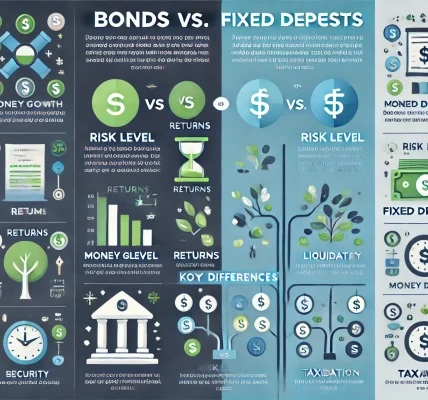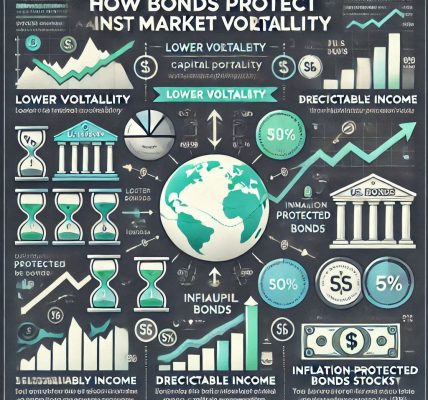Understanding how interest rate changes impact bond prices is essential for anyone investing in bonds. Whether you are a seasoned investor or new to the world of fixed-income securities, recognizing this relationship can help you make informed decisions and protect your portfolio from interest rate volatility.
In this guide, we will break down the relationship between interest rates and bond prices, explain the underlying mechanisms, and provide practical strategies to navigate changing interest rate environments.
Understanding the Bond Market Basics
A bond is a fixed-income investment where an investor lends money to a borrower (typically a corporation or government) in exchange for periodic interest payments and the return of the principal amount upon maturity.
Key Terms to Know:
- Principal: The original amount invested or loaned.
- Coupon Rate: The annual interest rate paid by the bond issuer.
- Yield: The return on investment for a bond, expressed as a percentage.
- Maturity Date: The date on which the bond’s principal is repaid to the investor.
The Inverse Relationship Between Interest Rates and Bond Prices
When interest rates rise, bond prices typically fall, and when interest rates fall, bond prices rise. This inverse relationship exists because bonds issued at fixed rates become more or less attractive depending on current market conditions.
Why Does This Happen?
- Opportunity Cost: When new bonds offer higher yields due to increased interest rates, older bonds with lower coupon payments become less attractive, leading to a decrease in their market price.
- Market Adjustment: To remain competitive, existing bond prices must adjust to align with current market yields.
Example:
Imagine you hold a bond with a 4% annual coupon rate. If interest rates rise to 6%, new investors can buy bonds offering 6% returns. As a result, the value of your 4% bond decreases because it provides a lower return.
Conversely, if interest rates fall to 2%, your 4% bond becomes more valuable as it offers a higher return than newly issued bonds.
Factors That Influence Bond Price Sensitivity
Not all bonds react the same way to interest rate changes. Several factors determine how much a bond’s price will fluctuate:
1. Duration
Duration measures a bond’s sensitivity to interest rate changes. Bonds with longer durations experience greater price swings compared to shorter-duration bonds.
- Short-Term Bonds: Less sensitive to interest rate changes.
- Long-Term Bonds: More sensitive to interest rate changes.
2. Coupon Rate
Bonds with lower coupon rates are more affected by interest rate movements. Higher coupon bonds provide more immediate cash flow, reducing their sensitivity.
- High Coupon Bonds: Less price fluctuation.
- Low Coupon Bonds: Greater price fluctuation.
3. Time to Maturity
Longer-maturity bonds are riskier in a rising rate environment because there is a longer time frame for interest rate shifts to impact their value.
- Short Maturity: Less impact from interest rate changes.
- Long Maturity: More impact from interest rate changes.
Impact of Rising vs. Falling Interest Rates
When Interest Rates Rise:
- Bond prices fall.
- New bonds become more attractive due to higher yields.
- Existing bondholders face capital losses if they sell before maturity.
When Interest Rates Fall:
- Bond prices rise.
- Existing bonds with higher coupon rates become more valuable.
- Bondholders may experience capital gains if they sell before maturity.
Strategies for Investors in Different Rate Environments
1. In a Rising Interest Rate Environment:
- Shorten Duration: Invest in short-term bonds to reduce sensitivity to rising rates.
- Floating-Rate Bonds: Consider bonds with variable interest rates that adjust with market rates.
- Bond Laddering: Spread investments across multiple maturities to manage reinvestment risk.
2. In a Falling Interest Rate Environment:
- Lock in Higher Yields: Purchase long-term bonds to secure attractive coupon rates.
- Capital Appreciation: Consider selling bonds before maturity to capitalize on rising prices.
3. Diversification Strategy:
- Diversify across government, corporate, and municipal bonds.
- Include bonds with different durations and coupon structures.
How Central Banks Influence Interest Rates
Central banks, such as the Federal Reserve, play a crucial role in setting interest rates. Their policies directly affect bond yields and market conditions.
- Tightening Policy (Rate Hikes): Reduces inflation but causes bond prices to fall.
- Easing Policy (Rate Cuts): Stimulates the economy and raises bond prices.
Understanding central bank policies can help investors anticipate and react to interest rate changes effectively.
Tax Considerations for Bond Investors
Bond income is typically taxed, but the tax treatment varies by bond type:
- Treasury Bonds: Taxed at the federal level but exempt from state/local taxes.
- Municipal Bonds: Often tax-free at the federal level and possibly at the state/local level.
- Corporate Bonds: Fully taxable at federal and state levels.
Common Mistakes to Avoid
- Ignoring Duration: Underestimating duration risk can lead to unexpected losses.
- Overconcentration: Focusing solely on long-term or short-term bonds increases risk.
- Neglecting Tax Efficiency: Overlooking tax advantages can reduce after-tax returns.
Conclusion
Interest rate changes have a profound impact on bond prices, and understanding this dynamic is crucial for successful investing. By managing duration, diversifying holdings, and staying informed about central bank policies, you can navigate changing rate environments effectively.
Whether you are a conservative investor seeking stability or looking to maximize returns, knowing how interest rates affect bonds empowers you to make smarter financial decisions. Always consult a financial advisor to align your bond investments with your unique goals and risk tolerance.




